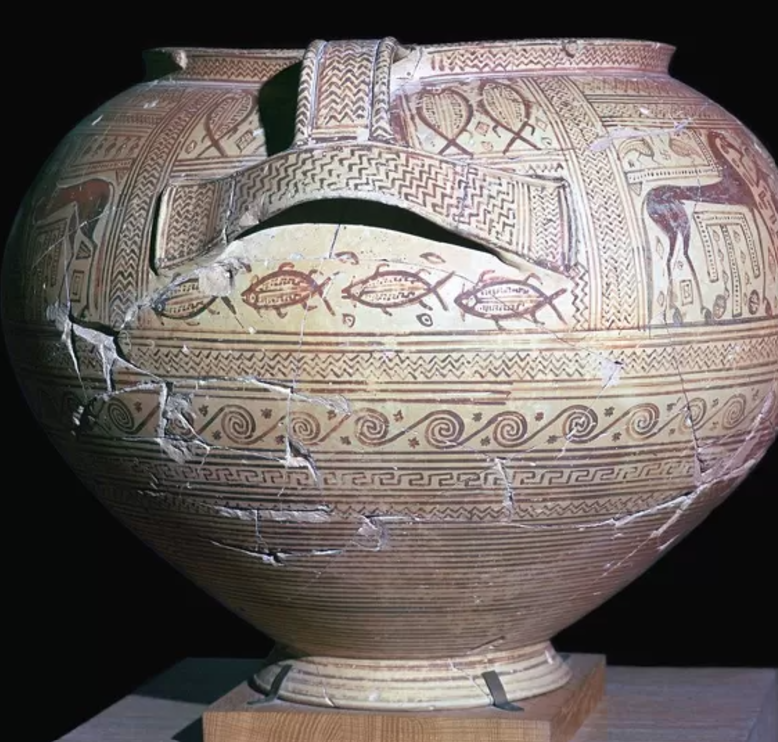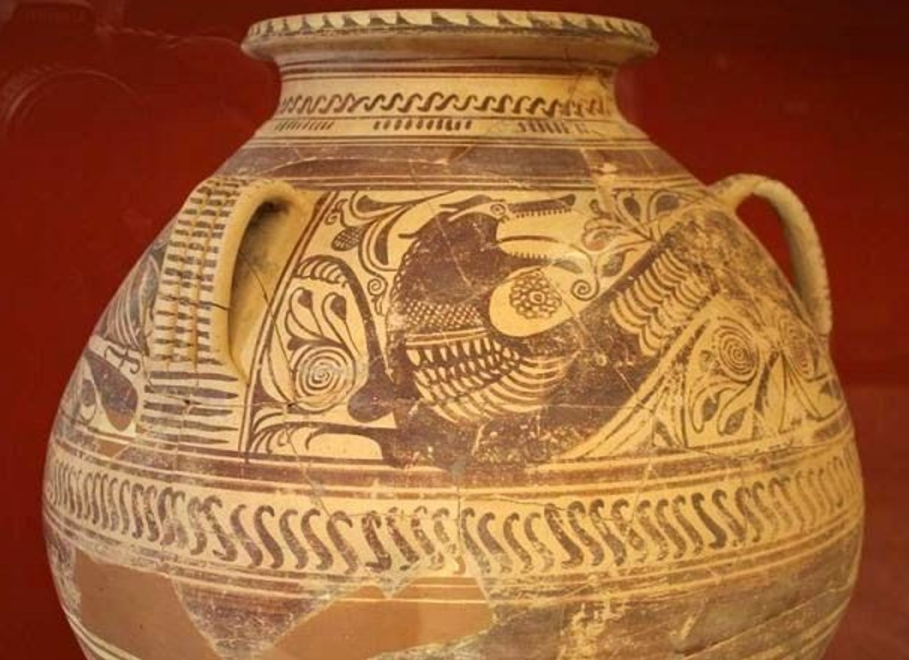The Indus Valley Civilization (IVC), a Bronze Age marvel that flourished in the northwestern regions of South Asia, stands as a testament to the ingenuity and artistic prowess of ancient societies. Spanning from approximately 3300 to 1300 BCE, with its peak period between 2600 and 1900 BCE, the IVC was one of the world’s earliest and most extensive civilizations. Among its many discoveries, a piece of painted pottery dating back 4,000 years offers fascinating insights into the cultural and artistic achievements of this enigmatic civilization. Join archeology.dulichvn.net to explore many unsolved ancient mysteries.
The Indus Valley Civilization: A Bronze Age Marvel
A Vast and Flourishing Civilization
The Indus Valley Civilization, contemporaneous with ancient Egypt and Mesopotamia, was the largest of these three early cradles of civilization. Its sites, scattered across modern-day northwestern India, Pakistan, and northeast Afghanistan, spanned an impressive area, reflecting the civilization’s extensive reach and influence.

An Advanced Urban Society
The IVC was renowned for its sophisticated urban planning, complete with grid-patterned cities, advanced drainage systems, and standardized weights and measures. Cities like Harappa, Mohenjo-Daro, and Dholavira were centers of commerce, governance, and culture, showcasing the civilization’s ingenuity in architecture and administration.
Artistry and Craftsmanship
The IVC was not only an urban and agricultural powerhouse but also a hub of artistic and cultural innovation. The discovery of seals, jewelry, sculptures, and pottery underscores the community’s appreciation for art and its symbolic and utilitarian roles in their daily lives.
See more: The Endurance: Rediscovering Shackleton’s Legendary Ship
The Painted Pottery: A Window into the Past
The Discovery of a Masterpiece
Among the many artifacts uncovered from the Indus Valley, a piece of 4,000-year-old painted pottery stands out as a remarkable example of ancient craftsmanship. Decorated with intricate geometric and naturalistic designs, this pottery reflects the artistic sensibilities and cultural expressions of the people of the time.

Materials and Techniques
The pottery was crafted from finely sifted clay and fired at high temperatures to ensure durability. Natural pigments, derived from minerals, were used to paint designs on the surface. The precision and consistency of these decorations suggest that the artisans of the IVC had a deep understanding of their materials and tools.
Symbolism and Purpose
The painted motifs often featured geometric patterns, animals, and plants, symbolizing fertility, prosperity, and the natural world. This pottery was not merely functional; it likely held cultural or religious significance, used in rituals or as decorative items in households.
The Broader Cultural Context
Interconnected Societies
The IVC’s geographical position and extensive trade networks enabled it to exchange goods and ideas with neighboring civilizations, including Mesopotamia and Central Asia. Painted pottery often reflected these interactions, with stylistic influences evident in the designs and motifs.

A Language Yet to Be Deciphered
Despite the wealth of artifacts, including pottery, one of the enduring mysteries of the IVC is its undeciphered script. Symbols on pottery and seals hint at a sophisticated writing system, possibly used to record trade, religious practices, or governance.
A Legacy of Innovation
The painted pottery of the Indus Valley exemplifies the civilization’s innovation, blending utility with artistry. Its techniques influenced subsequent cultures in the region, leaving an indelible mark on the subcontinent’s craft traditions.
See more: Standing Tall The Story of Redwood Trees and Their Timeless Beauty
The Rediscovery of the Indus Valley
Archaeological Efforts
The IVC was rediscovered in the 1920s during excavations at Harappa and Mohenjo-Daro in present-day Pakistan. These findings revealed a civilization advanced far beyond its time, with painted pottery among the most significant discoveries.

Modern-Day Preservation
Today, these artifacts are preserved in museums across the globe, including the National Museum in Delhi and the British Museum in London. Efforts to conserve these relics highlight the global significance of the Indus Valley Civilization.
Lessons from the Past
The discovery of painted pottery serves as a reminder of humanity’s enduring creativity and the connections between art, culture, and daily life. It inspires us to learn from the past and appreciate the cultural heritage that shapes our world.
Why the Indus Valley Civilization Matters Today
A Glimpse into Early Human Society
The IVC offers unparalleled insights into the organization, culture, and achievements of one of the world’s earliest urban societies. Artifacts like painted pottery provide tangible links to a civilization that laid the groundwork for future societies.

An Inspiration for Modern Craftsmanship
The precision and beauty of Indus Valley pottery continue to inspire modern artisans. Its designs have been revived in contemporary art, bridging the ancient and the modern.
A Call for Further Exploration
Despite decades of research, much about the IVC remains unknown. Its artifacts, including painted pottery, serve as a call to continue exploring and understanding the mysteries of this extraordinary civilization.
Conclusion
The 4,000-year-old painted pottery from the Indus Valley Civilization is more than just an artifact; it is a silent storyteller of an ancient world. Through its intricate designs and enduring craftsmanship, it offers a glimpse into the lives, beliefs, and artistry of a people who thrived in harmony with their environment. As we marvel at this relic, we are reminded

CÁC TIN KHÁC
Mark Twain & Olivia Langdon: A 36-Year Love Story Filled with Laughter and Devotion
The Tollund Man: A 2,400-Year-Old Mystery Preserved in a Danish Bog
Skara Brae: Scotland’s Hidden Neolithic Village
Porta Nigra: The Hidden Depths of Trier’s Iconic Roman Gate